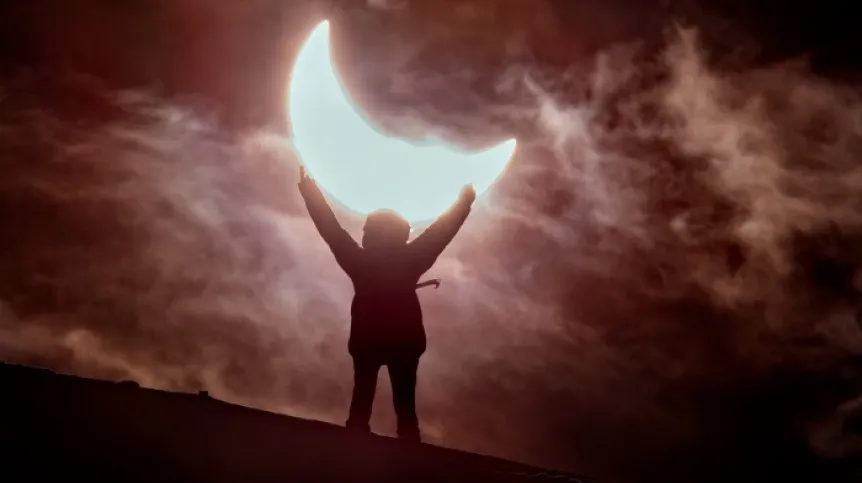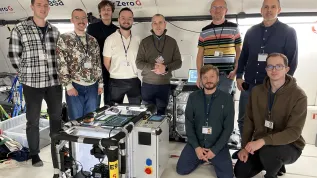
Wioleta Gorecka from Poland is the author of NASA's Astronomy Picture of the Day. The photograph shows the solar eclipse observed from Iceland, where it reached a maximum of 70 percent.
Astronomy Picture of the Day (APOD) website has been run by NASA since 1995. One photo of astronomical objects or astrolandscape is published every day. The author's photograph was selected NASA's Astronomy Picture of the Day on March 30 this year.
'The photo shows the solar eclipse of March 29 in Iceland, where it reached a maximum of 70 percent. Due to the fact that the Sun was already quite high, taking this photo required choosing the right elevation and a place where the cloud cover was ideal for taking a single exposure. I chose a dormant volcano - Grabrok, 170 meters high. A strong, frosty wind was blowing at the top, so it was a sacrifice, especially for my friend Ilona Chrzanowska, who can be seen in the photo; and the photo itself, to be honest, was technically one of the most difficult I have ever taken', Wioleta Gorecka describes for PAP.
She mentions that her adventure with photography began with the observations of the first auroras 16 years ago, when she moved to Iceland.
'The cosmos itself has been inspiring me since I was a child, so as my skills developed, I boldly reached for the stars in my photos. The first competition wins, awards, and publications began to appear', she describes.
This is the second time her photo was selected awarded the NASA's Astronomy Picture of the Day; the first time was on August 15, 2023. In that one photo, she managed to capture the aurora, gas emissions from the Fagradalsfjall volcano, and emissions from the Svartsengi geothermal power plant.
'My works also appeared quite regularly on another NASA portal - spaceweather.com. I am also the first Polish woman whose photo appeared in the prestigious American astronomy magazine Sky & Telescope', she mentions.
She adds that she is currently also a professional photographer, and for two years she has been organizing astro expeditions to various corners of the world, 'of course, the darkest corners' with Michał Kałużny - one of the leading Polish astrophotographers.
'These places are usually remote due to the very high light pollution in Europe. In Poland, for example, we have only one such black pearl - the Bieszczady Mountains, and even there, unfortunately, things are getting worse. It is terrifying that 75% of the world's population has never seen the Milky Way! Various articles on the subject of light pollution appear - from the harmfulness of this state of affairs to energy saving, but nothing comes of it, governments seem to be uninterested in the problem. Technology is developing, we are moving towards ecological solutions, sometimes quite radical ones, and we are unable to deal with a simple problem, which is excessive and completely energy-inefficient lighting in cities and villages', she points out.
'Nevertheless, it is good to see interest in astrophotography among people of all ages, from teenagers to retirees; we are appreciated both in Poland and abroad. I am very impressed by how much this field has developed in terms of technology, facilitating some solutions and at the same time making it possible for someone who really wants to, to reach for the stars. It has reawakened the discoverer syndrome worthy of Nicolaus Copernicus in us and I am proud of that!' she concludes.
In recent months, several photographs taken by authors from Poland were selected APOD: by Marcin Rosadziński (three times), Mariusz Durlej, Antoni Zegarski, Marcin Ślipko, Daniel Koszela, Ireneusz Nowak and Włodzimierz Bubak.
The APOD photo by Wioleta Gorecka can be viewed at: https://apod.nasa.gov/apod/ap250330.html. (PAP)
bar/ mhr/













